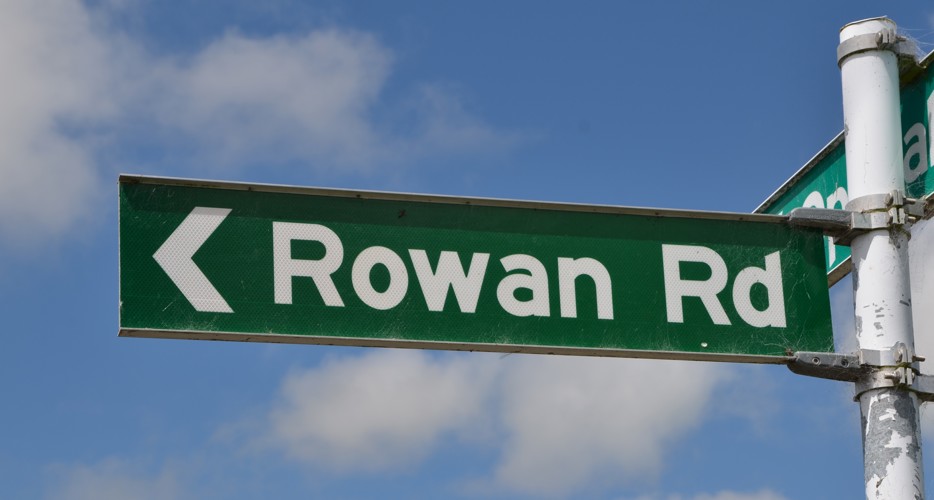 Rowan Road sign (2017). Mike Gooch. Word on the street image collection.
Rowan Road sign (2017). Mike Gooch. Word on the street image collection.
 Rowan Road sign (2017). Mike Gooch. Word on the street image collection.
Rowan Road sign (2017). Mike Gooch. Word on the street image collection.
All that remains of the small settlement of Rowan is a monument surrounded by the stone piles of the old school.
The township was named after Captain Frederic Charles Rowan. He arrived in New Zealand with the 43rd Regiment and he later commanded the Taranaki Rifle Volunteers. Rowan was seriously wounded at the battle of Te Ngutu o Te Manu and returned to England for reconstructive surgery.
Undaunted by his experience he decided to come back to New Zealand. During a stop over in Melbourne he met and married a local woman, Ellis Ryan. On arriving in New Zealand Rowan was posted to Pukearuhe. At this isolated outpost Rowan, an accomplished painter and botanist, encouraged his wife to follow the same interest. Ellis Rowan went on to become a hugely respected botanical artist. The couple moved back to Melbourne, where Frederic Rowan died in 1892, aged 47.
The settlement named after the British soldier was located on the lower slopes of Mount Taranaki, not far from Kaponga. It was settled in the 1880s and by 1892 there were enough children to open a school. The roll reached a high of 42 in 1926 before gradually falling to 28 in 1938, when a decision was made to merge with Kaponga School.
The school building lay empty for a decade before being put to use as the local hall after the exisiting one was destroyed by fire. However, like all rural communities, the amalgamation of small farms into larger units began to affect Rowan. Traditional community events such as card evenings and discussion groups dwindled as people left the area.
Locals valiantly tried to maintain the hall but in 2003 it was finally demolished. The monument, and of course Rowan Road, means the settlement will not be forgotten.
This story was originally published in the Taranaki Daily News.
Please do not reproduce these images without permission from Puke Ariki.
Contact us for more information or you can order images online here.